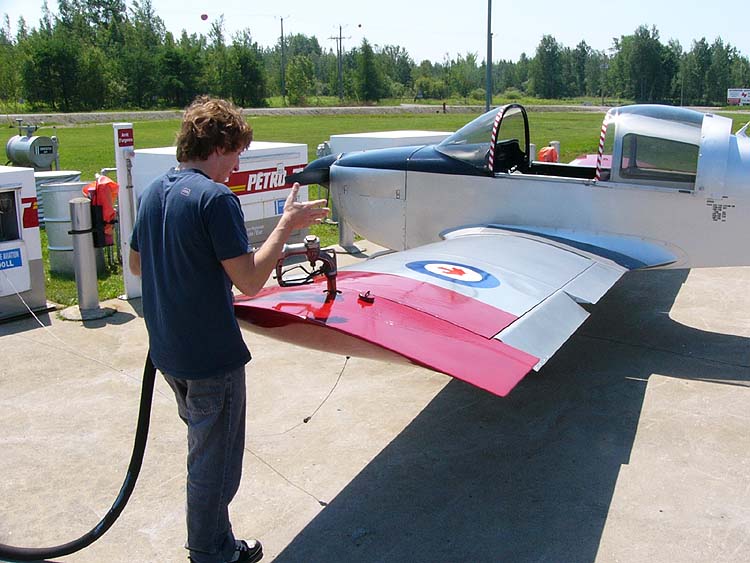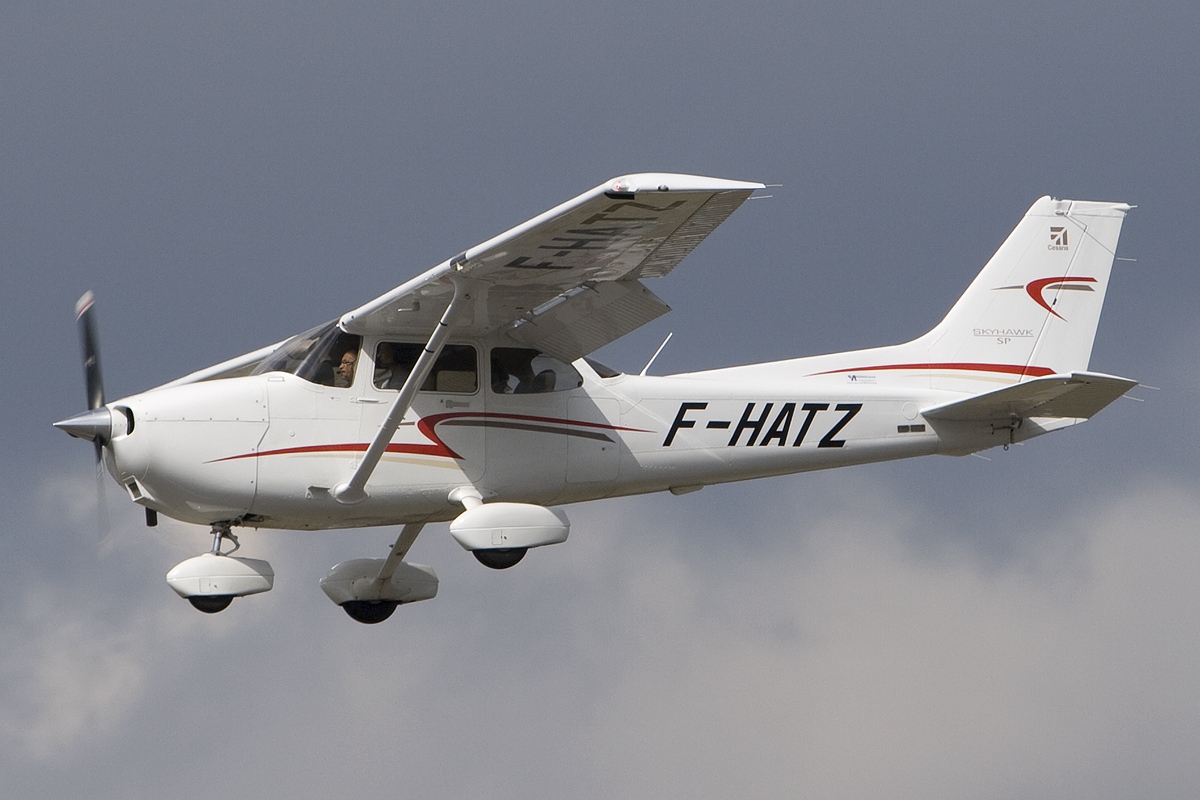|
Lycoming O-340
The Lycoming O-340 is a family of four-cylinder Flat engine, horizontally opposed, carburetor-equipped aircraft engines, that was manufactured by Lycoming Engines in the mid-1950s. Design and development The O-340 was designed by Lycoming specifically for the TEMCO-Riley D-16A Twin Navion project. Jack Riley, the designer of that aircraft was interested in an upgraded version of the Lycoming O-320 that would produce more power to give the Twin Navion a better single-engine service ceiling. The Lycoming O-360 was still years away in development and so a modification of the O-320 was undertaken by Lycoming. The O-320 received longer cylinder barrels and a crankshaft with a longer stroke to increase displacement and different piston connecting rods. This increased the compression to 8.5:1 and boosted power output to over the O-320's . The engine was later used in a number of airplanes and helicopters and also in home-built aircraft, amateur-built aircraft designs. The O-340 family ... [...More Info...] [...Related Items...] OR: [Wikipedia] [Google] [Baidu] |
WikiProject Aircraft
A WikiProject, or Wikiproject, is a Wikimedia movement affinity group for contributors with shared goals. WikiProjects are prevalent within the largest wiki, Wikipedia, and exist to varying degrees within sister projects such as Wiktionary, Wikiquote, Wikidata, and Wikisource. They also exist in different languages, and translation of articles is a form of their collaboration. During the COVID-19 pandemic, CBS News noted the role of Wikipedia's WikiProject Medicine in maintaining the accuracy of articles related to the disease. Another WikiProject that has drawn attention is WikiProject Women Scientists, which was profiled by '' Smithsonian'' for its efforts to improve coverage of women scientists which the profile noted had "helped increase the number of female scientists on Wikipedia from around 1,600 to over 5,000". On Wikipedia Some Wikipedia WikiProjects are substantial enough to engage in cooperative activities with outside organizations relevant to the field at issue. For e ... [...More Info...] [...Related Items...] OR: [Wikipedia] [Google] [Baidu] |
Engine Displacement
Engine displacement is the measure of the cylinder volume swept by all of the pistons of a piston engine, excluding the combustion chambers. It is commonly used as an expression of an engine's size, and by extension as a loose indicator of the power an engine might be capable of producing and the amount of fuel it should be expected to consume. For this reason displacement is one of the measures often used in advertising, as well as regulating, motor vehicles. It is usually expressed using the metric units of cubic centimetres (cc or cm3, equivalent to millilitres) or litres (l or L), orparticularly in the United States cubic inches (CID, cu in, or in3). Definition The overall displacement for a typical reciprocating piston engine is calculated by multiplying together three values; the distance travelled by the piston (the stroke length), the circular area of the cylinder, and the number of cylinders in the whole engine. The formula is: : \text = \text \times \frac \times ... [...More Info...] [...Related Items...] OR: [Wikipedia] [Google] [Baidu] |
List Of Aircraft Engines
This is an alphabetical list of aircraft engines by manufacturer. 0–9 2si *2si 215 *2si 230 * 2si 430 * 2si 460 *2si 500 * 2si 540 * 2si 690 3W ''Source: RMV'' *3W 106iB2 *3W-110 *3W-112 *3W-170 *3W-210 *3W-220 A Abadal (Francisco Serramalera Abadal) *Abadal Y-12 350/400 hp ABC ''Source: Lumsden.'' * ABC 8 hp * ABC 30hp V-4 * ABC 45hp V-6 * ABC 60hp V-8 * ABC 85hp V-6 * ABC 100hp V-8 * ABC 115 hp * ABC 170hp V-12 * ABC 225hp V-16 *ABC Dragonfly *ABC Gadfly *ABC Gnat *ABC Hornet * ABC Mosquito *ABC Scorpion *ABC Wasp *ABC type 10 APU *ABC type 11 APU ABECO ''Source: RMV'' *ABECO GEM Aberg ''Source: RMV'' *Type Sklenar ABLE ''Source: RMV'', Able Experimental Aircraft Engine Co. (Able Experimental Aircraft Engine Co., Altimizer, Hoverhawk (US)) *ABLE 2275 *ABLE 2500 *ABLE VW x 2 Geared Drive Accurate Automation Corp *Accurate Automation AT-1500 *Accurate Automation AT-1700 Ace (Ace American Engr Corp, Horace Keane Aeroplane Co, North Beac ... [...More Info...] [...Related Items...] OR: [Wikipedia] [Google] [Baidu] |
Piper Aztec
The Piper PA-23, named Apache and later Aztec, is an American four- to six-seat twin-engined light aircraft aimed at the general-aviation market. The United States Navy and military forces in other countries also used it in small numbers. Originally designed in the 1950s by the Stinson Aircraft Company, Piper Aircraft manufactured the Apache and a more powerful version, the Aztec, in the United States from the 1950s to the 1980s. Design and development The PA-23 was the first twin-engined Piper aircraft, and was developed from a proposed "Twin Stinson" design, inherited when Piper bought the Stinson Division of the Consolidated Vultee Aircraft Corporation. The prototype PA-23 was a four-seat, low-wing, all-metal monoplane with a twin tail, powered by two 125 hp Lycoming O-290-D piston engines; it first flew on March 2, 1952. The aircraft performed badly, so it was redesigned with a single vertical stabilizer and an all-metal rear fuselage and more powerful 150 hp Lycomi ... [...More Info...] [...Related Items...] OR: [Wikipedia] [Google] [Baidu] |
Oakland Super V
Oakland is the largest city and the county seat of Alameda County, California, United States. A major West Coast port, Oakland is the largest city in the East Bay region of the San Francisco Bay Area, the third largest city overall in the Bay Area and the eighth most populated city in California. With a population of 440,646 in 2020, it serves as the Bay Area's trade center and economic engine: the Port of Oakland is the busiest port in Northern California, and the fifth busiest in the United States of America. An act to incorporate the city was passed on May 4, 1852, and incorporation was later approved on March 25, 1854. Oakland is a charter city. Oakland's territory covers what was once a mosaic of California coastal terrace prairie, oak woodland, and north coastal scrub. In the late 18th century, it became part of a large ''rancho'' grant in the colony of New Spain. Its land served as a resource when its hillside oak and redwood timber were logged to build San Francisco. ... [...More Info...] [...Related Items...] OR: [Wikipedia] [Google] [Baidu] |
Cessna 170
The Cessna 170 is an American light, single-engined, general aviation aircraft produced by the Cessna Aircraft Company between 1948 and 1956. It is the predecessor of the Cessna 172, the most produced aircraft in history, which replaced the 170 in production in 1956. Development 170 In late 1948, Cessna began sales of the 170, with a metal fuselage and tail and fabric-covered constant-chord wings. These earliest 170s were four-seat versions of the popular 140 with a more powerful Continental C145-2 and larger fuel tanks. Like the 140, they were constructed of metal with fabric-covered wings supported by a "V" strut. 170A In 1949 Cessna began marketing the 170A, an all-metal 170 with zero- dihedral wing tapered outboard of the slightly-enlarged plain flaps, and a single strut replacing the "V" strut of the 170. This and subsequent versions of the 170 shared the fin/rudder shape of the larger Cessna 190 and 195 models. 305 In 1950, the United States Air Force, Army ... [...More Info...] [...Related Items...] OR: [Wikipedia] [Google] [Baidu] |
Avgas
Avgas (aviation gasoline, also known as aviation spirit in the UK) is an aviation fuel used in aircraft with spark-ignited internal combustion engines. ''Avgas'' is distinguished from conventional gasoline (petrol) used in motor vehicles, which is termed ''mogas'' (motor gasoline) in an aviation context. Unlike motor gasoline, which has been formulated since the 1970s to allow the use of platinum-content catalytic converters for pollution reduction, the most commonly used grades of avgas still contain tetraethyllead (TEL), a toxic substance used to prevent engine knocking (premature detonation). There are ongoing experiments aimed at eventually reducing or eliminating the use of TEL in aviation gasoline. Kerosene-based jet fuel is formulated to suit the requirements of turbine engines which have no octane requirement and operate over a much wider flight envelope than piston engines. Kerosene is also used by most diesel piston engines developed for aviation use, such as tho ... [...More Info...] [...Related Items...] OR: [Wikipedia] [Google] [Baidu] |
Pusher Configuration
In an aircraft with a pusher configuration (as opposed to a tractor configuration), the propeller(s) are mounted behind their respective engine(s). Since a pusher propeller is mounted behind the engine, the drive shaft is in compression in normal operation. Pusher configuration describes this specific (propeller or ducted fan) thrust device attached to a craft, either aerostat (airship) or aerodyne (aircraft, WIG, paramotor, rotorcraft) or others types such as hovercraft, airboat and propeller-driven snowmobiles. "Pusher configuration" also describes the layout of a fixed-wing aircraft in which the thrust device has a pusher configuration. This kind of aircraft is commonly called a pusher. Pushers have been designed and built in many different layouts, some of them quite radical. History The rubber-powered "Planophore", designed by Alphonse Pénaud in 1871, was an early successful model aircraft with a pusher propeller. Many early aircraft (especially biplanes) were ... [...More Info...] [...Related Items...] OR: [Wikipedia] [Google] [Baidu] |
Tractor Configuration
In aviation, the term tractor configuration refers to an aircraft constructed in the standard configuration with its engine mounted with the propeller in front of it so that the aircraft is "pulled" through the air. Oppositely, the pusher configuration places the airscrew behind and propels the aircraft forward. Through common usage, the word "propeller" has come to mean any airscrew, whether it actually propels or pulls the plane. In the early years of powered aviation both tractor and pusher designs were common. However, by the midpoint of the First World War, interest in pushers declined and the tractor configuration dominated. Today, propeller-driven aircraft are assumed to be tractors unless it is stated otherwise. Origins The first airplane to have a "tractor" configuration was the Goupy No.2 (first flight on 11 March 1909) designed by Mario Calderara and financed by Ambroise Goupy at the French firm Blériot Aéronautique. When it was constructed, it was the fast ... [...More Info...] [...Related Items...] OR: [Wikipedia] [Google] [Baidu] |
Type Certificate
A type certificate signifies the airworthiness of a particular category of aircraft, according to its manufacturing design (''type design''). It confirms that the aircraft of a new type intended for serial production, is in compliance with applicable airworthiness requirements established by the national air law. For up to three seats, primary category aircraft, certification costs around US$1m, US$25m for a general aviation aircraft and hundreds of millions of dollars for a commercial aircraft; certification delays can cost millions of dollars and can decide a program's profitability. Authority A type certificate (TC) is issued to signify the airworthiness of the approved design or "type" of an aircraft to be manufactured. The TC is issued by a regulatory authority, and once issued, the design cannot be changed unless at least part of the process for certification is repeated to cover the changes. The TC reflects a determination made by a regulatory authority that the type desig ... [...More Info...] [...Related Items...] OR: [Wikipedia] [Google] [Baidu] |






